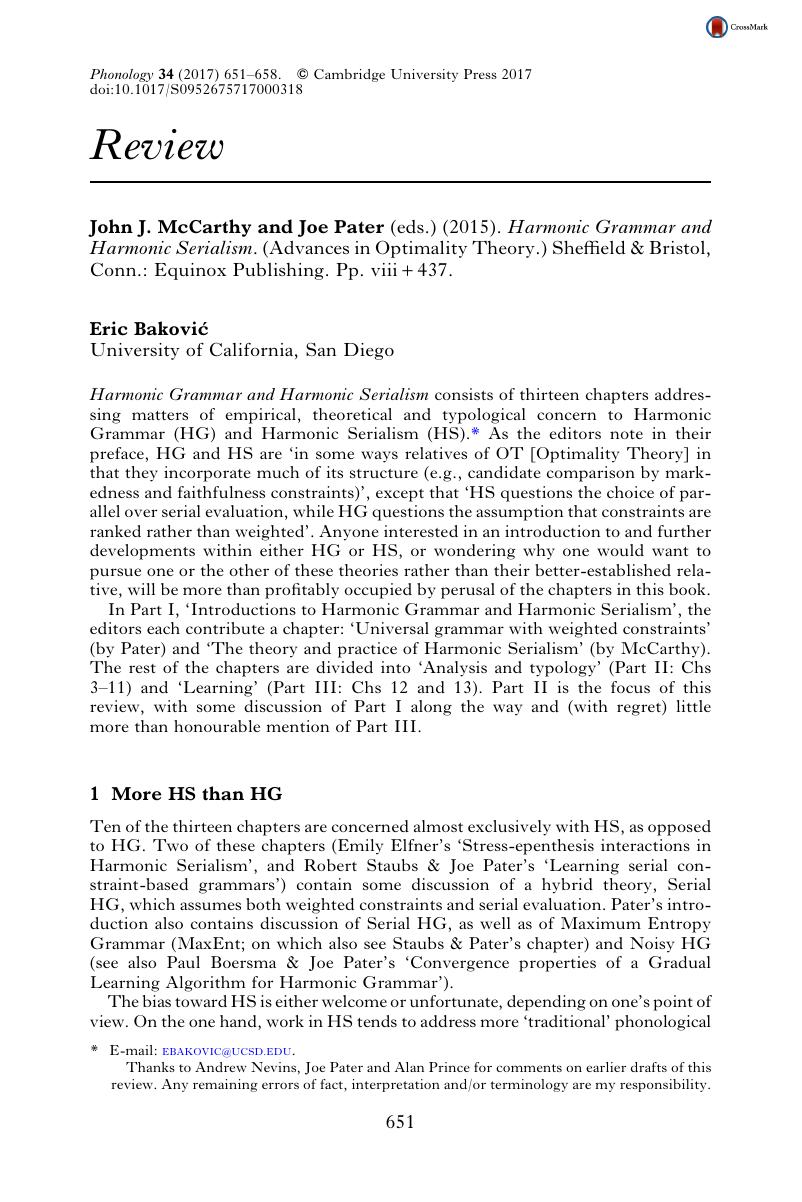No CrossRef data available.
Article contents
John J. McCarthy and Joe Pater (eds.) (2015). Harmonic Grammar and Harmonic Serialism. (Advances in Optimality Theory.) Sheffield & Bristol, Conn.: Equinox Publishing. Pp. viii+437.
Published online by Cambridge University Press: 19 December 2017
Abstract

- Type
- Review
- Information
- Copyright
- Copyright © Cambridge University Press 2017
Footnotes
Thanks to Andrew Nevins, Joe Pater and Alan Prince for comments on earlier drafts of this review. Any remaining errors of fact, interpretation and/or terminology are my responsibility.


